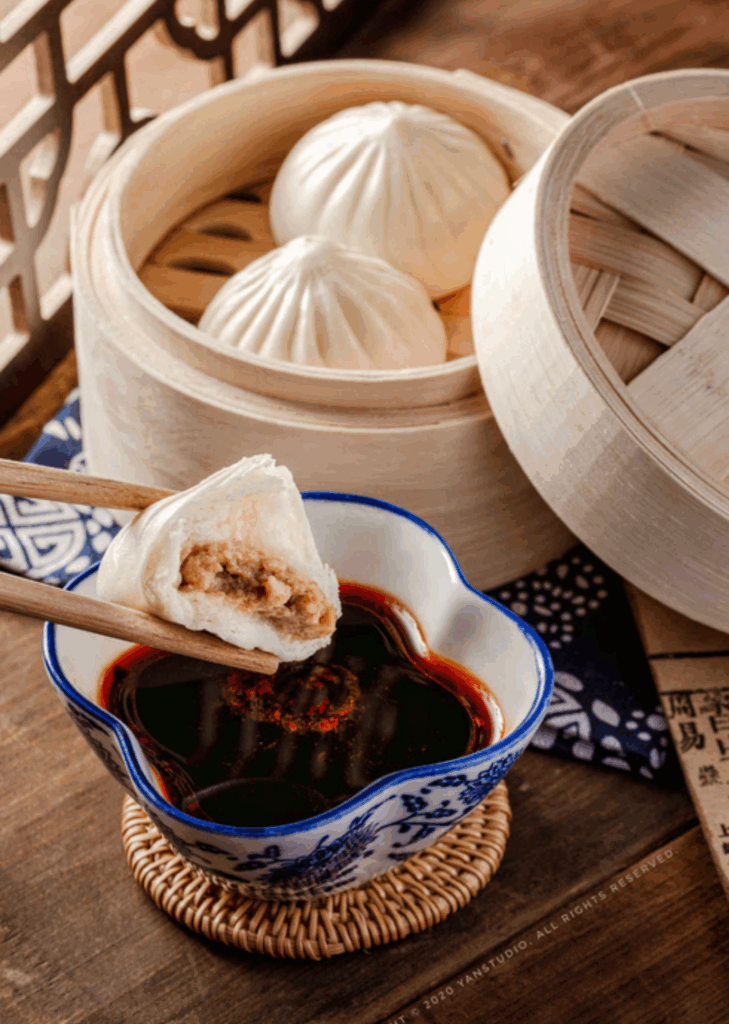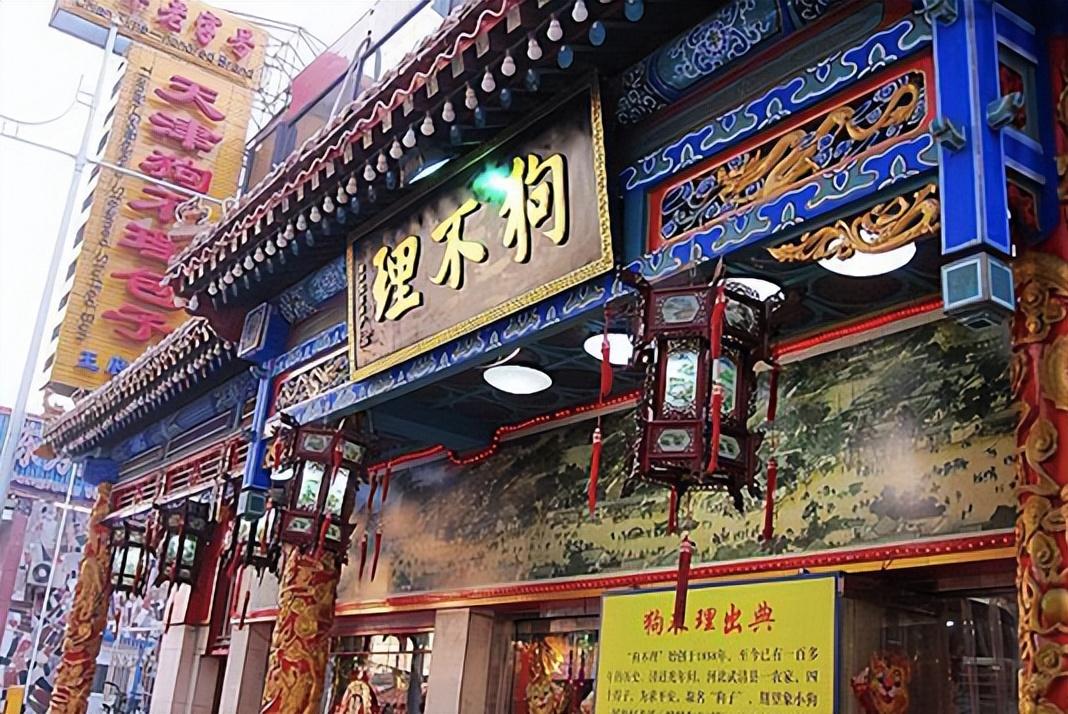Tianjin’s Goubuli Baozi: The Legendary 18-Fold Delight That Defied Emperors
Steaming baskets of Goubuli baozi (狗不理包子) have been tantalizing taste buds since 1858, when a humble street vendor created what would become China’s most storied stuffed bun. More than just a snack, these juicy, precisely pleated treasures represent the pinnacle of northern Chinese culinary craftsmanship.
The Bite That Started an Empire: Anatomy of Perfection

What separates Goubuli from ordinary baozi?
🥟 The Skin
- Made from a “half-leavened” dough (半发面) using Tianjin’s mineral-rich water
- Achieves translucent thinness at the top while staying pillowy at the base
- Precisely 18 folds in each pleat – no more, no less
🐖 The Filling
- A secret ratio of 70% pork neck (for fat) + 30% thigh (for texture)
- Hand-chopped to preserve meat fibers’ springiness
- Seasoned with Tianjin’s famous Xiaozhan soy sauce and sesame oil
💦 The Juice
- Bone broth gelatin added to filling, melting into aromatic nectar at first bite
- Unlike soup dumplings, the liquid stays clear and light
From Street Stall to Imperial Banquet: A Rebellious History
1858 – Young Gao Guiyou, working at his family’s bun stall in Tianjin’s Old City, earned the nickname “Goubuli” (狗不理 – “Dogs Ignore”) for being too focused on perfecting buns to greet customers
1897 – After local fame, Li Hongzhang (Qing Dynasty statesman) served Goubuli buns to Empress Dowager Cixi, who declared them “supreme under heaven”
1920s-30s – Became Tianjin’s culinary ambassador, with locations in Beijing’s Qianmen and Shanghai’s Bund
2011 – Recognized as China’s first food-related national intangible cultural heritage
Today – The original Heping Road location still uses Gao family’s wooden molds from 1900s
The 8-Hour Alchemy: Traditional Production Process
- Dough Enlightenment
• Flour aged 3 months for optimal gluten development
• Mixed with 30°C water and a pinch of alkali for chew without toughness - Meat Meditation
• Filling hand-chopped for 30 minutes to achieve “mushroom-top” texture
• Marinated with ginger water (never chunks) for subtle fragrance - Pleating Perfection
• Masters make 18 clockwise folds in exactly 7 seconds
• Top knot pressed with bamboo stamps for even steaming - Bamboo Ballet
• Steamed over wild reed mats for earthy aroma
• Cooked at rolling boil for 8 minutes precisely
The Ritual of Eating: More Than Just a Bite
🍽 Traditional Serving Style
- Single-layer bamboo baskets (no stacking to prevent sticking)
- Accompanied by Tianjin pickled garlic and millet porridge
🥢 The Art of Consumption
- Observe the translucent top revealing filling’s silhouette
- Pierce gently to release fragrant steam
- Sip the juices before taking full bite
🌶 Modern Twists
- Crab roe & sea urchin versions at Goubuli Mansion
- Mini “Jade Rabbit” buns for children’s birthdays
- Frozen kits with QR-coded folding tutorials
Why Gourmets Still Queue at 5 AM
In an era of mass production, authentic Goubuli remains handmade by 4th-generation masters who:
- Reject mechanical mixers to preserve “living dough” texture
- Use Yongle Bridge spring water (same as 1858 source)
- Maintain the original 1:1.8 dough-to-filling ratio
Pro Tip: Visit the Shandong Road flagship at dawn to watch masters fold buns by moonlight – the way Gao Guiyou did 160 years ago.
Have you tried the legendary 18 folds? Share your baozi adventures below!
Hungry for more Chinese culinary legends? Stay tuned for our deep dive into Xi’an’s Yangrou Paomo! 🥟🔥
